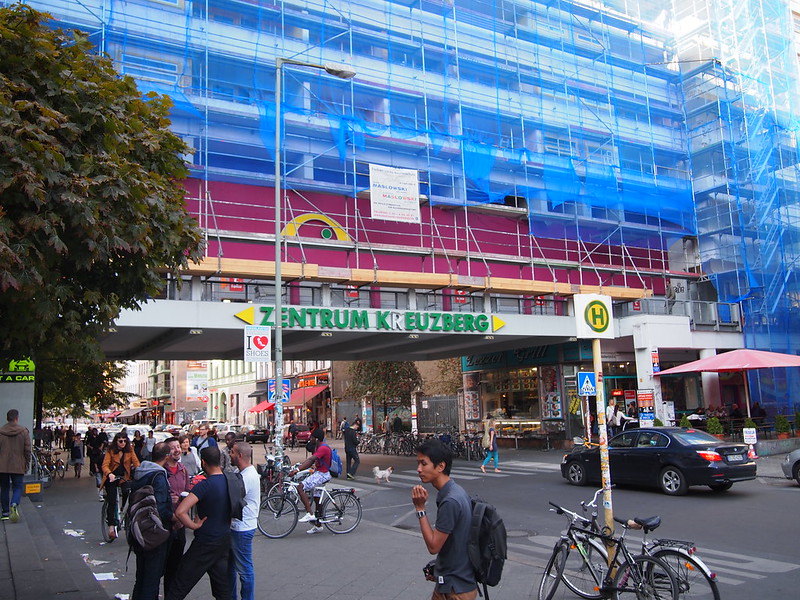
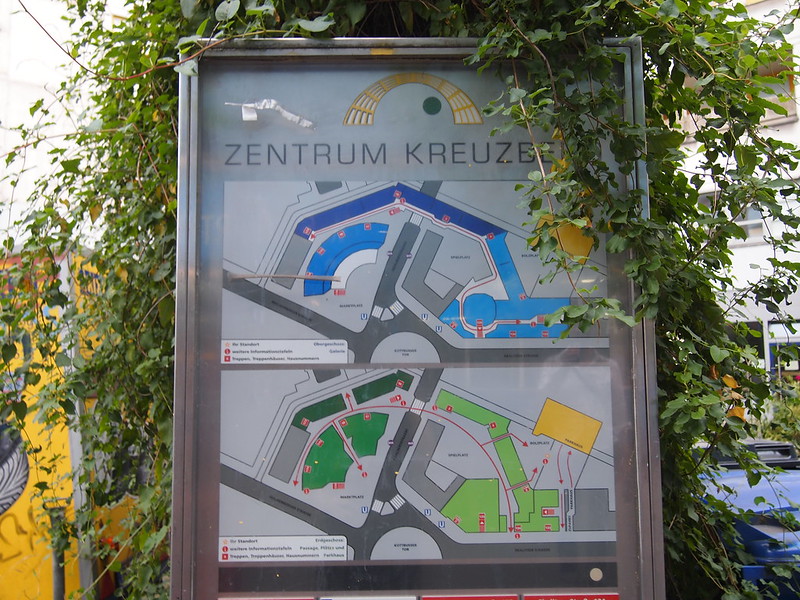
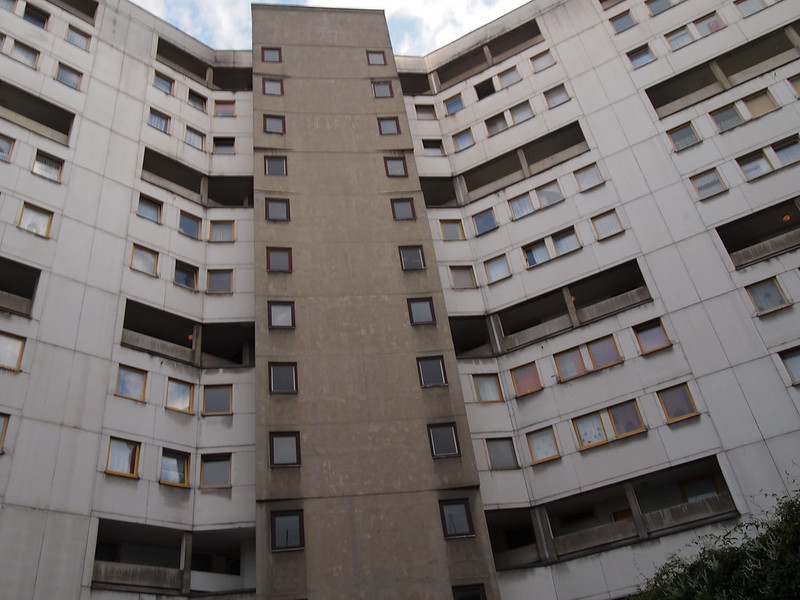
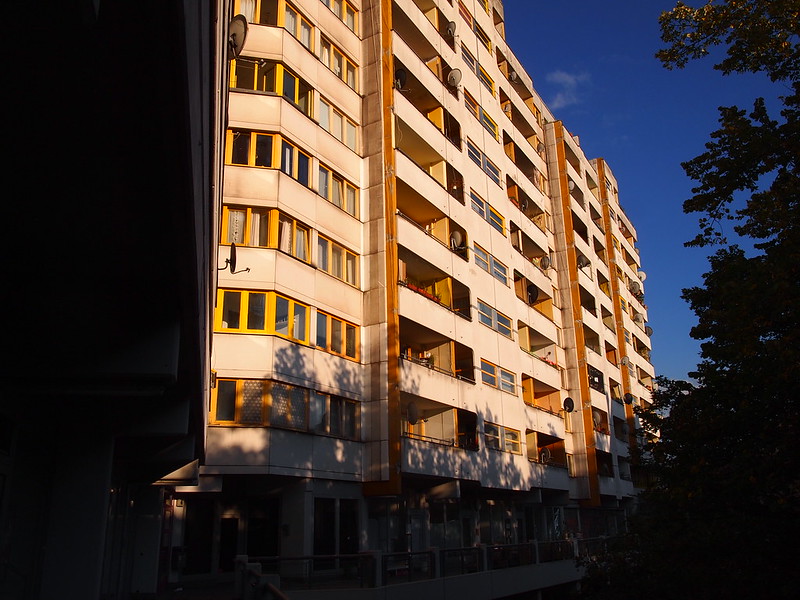
In 1974, some 40 years ago, the Neue Kreuzberger Zentrum (NKZ) was built. A staggering mammoth of a mixed-use tower block, it stands at the centre of the chaotic and noisy Kottbusser Tor traffic junction. Its construction required the complete demolition and rebuilding of the area, and the word “neue” was surely in its name to suggest that it was imagined to be the starting point for a new urban direction in Kreuzberg. Its arch design was meant to compliment the development of the future ring road whilst allowing the building to serve as a wall for the traffic sounds.
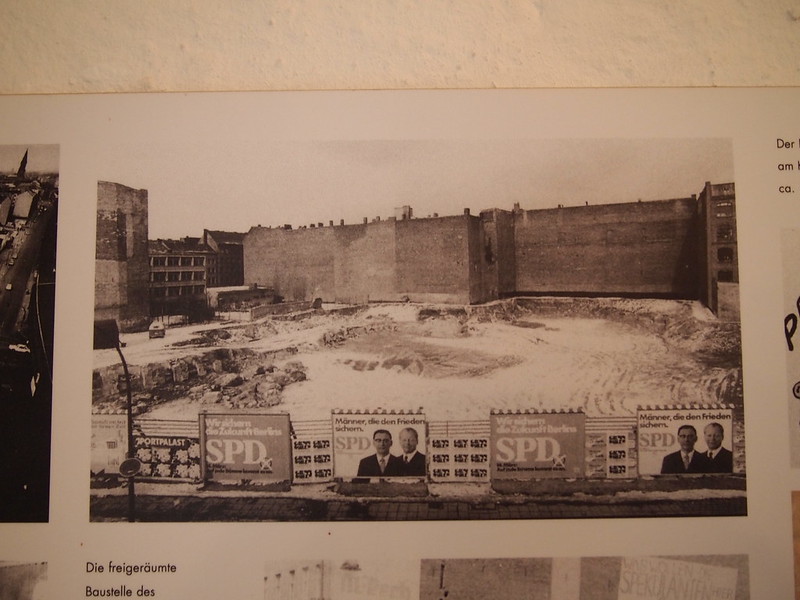
If you go down to the FHXB Museum near the NKZ, they have a permanent exhibit of how the building and area was redeveloped, including a photo of the site upon which the NKZ has been built, in which the outside of the demolished site has huge posters from the Social Democratic Party stating “Wir sichern die Zukunft Berlin” (We ensure/secure the future of Berlin). A dream for the future, to build more social housing in the area which sorely needed it in the post-war era, but blighted by different demands and interests pulling it in all directions and pushing it forward against the will of the people living in the area. The NKZ was criticised for having been built without sufficient public consultation or participation and having used brutal forced evictions to clear the land.
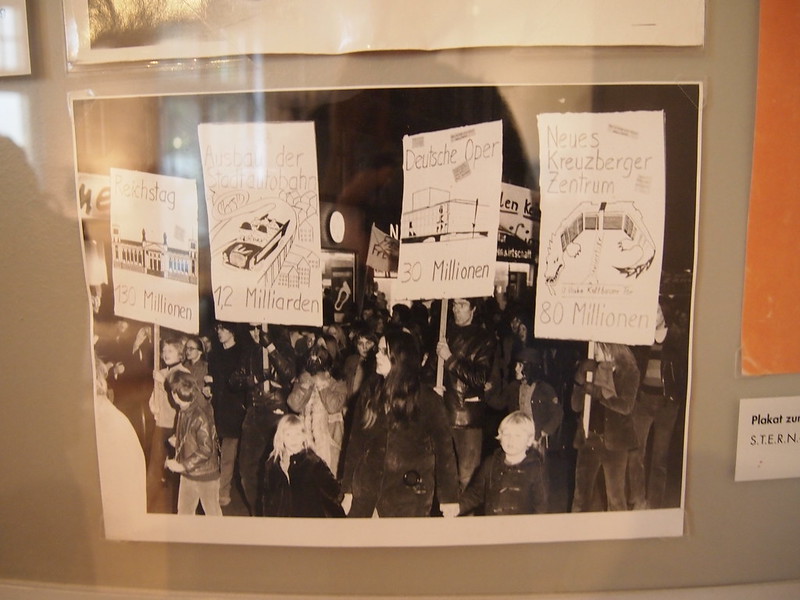

When I was in Berlin for the summer, I frequented a printer on Dresdener Straße in Kottbusser Tor which was directly behind this mammoth of a building. On exiting the dead-end of Dresdener Straße, I saw a stair leading upwards, which took me to an fantastic upper level that crossed over to the other side. I was instantly attracted to it, although it was hard to explain why.
The main issue was that I couldn’t even recall why it looked familiar to me - did I see this on my last trip to Berlin in 2011? Or was it 'familiar' because I had seen a similar building in the Genting Highlands, or Singapore? Was it a falsely displaced nostalgia for this sort of dated architecture; or was it the pleasure of discovering something that seemed like a fantastic urban playground to me, with its numerous stairs and corners and vantage points?
Today the word “neue” has been removed from its name, and it is simply known as the Kreuzberg Zentrum. But in some ways, the NKZ reminded me of Golden Mile in Singapore, one of my favourite buildings in Singapore. Both the Golden Mile and NKZ were planned as buildings which would be at the centre of a glittering, golden era of modern urban development, although in both cases it did not materialise as such in those locations. Golden Mile has been later described as a vertical slum, but it remains as one of my favourites because of the diversity of spaces within it, and how well used it appeared to be. I suppose I was fascinated that the thai people in the Golden Mile Complex would sit on the stairs and use them as picnic areas. To some it might seem like a unorthodox use of the spaces within the building but in my opinion they had done it all right! The food was tasty, the spaces were welcoming, the music went on and on - in my opinion the building was a success!
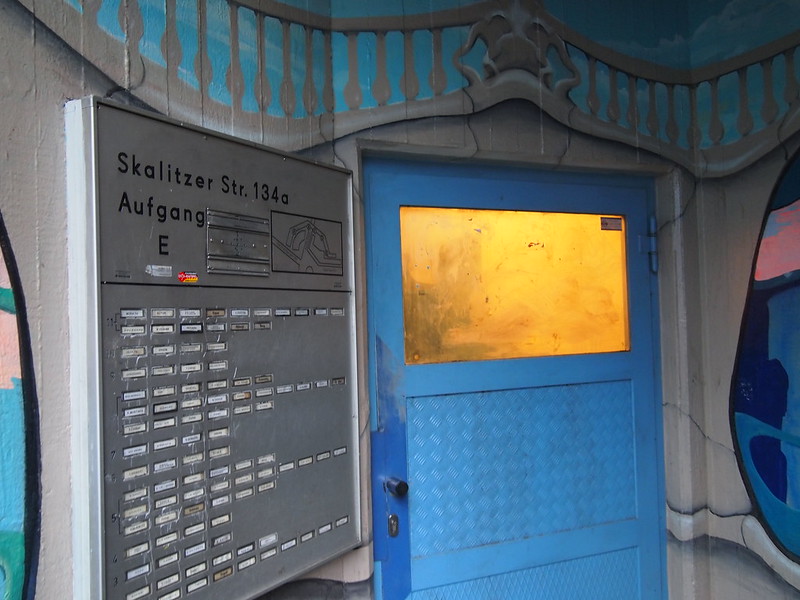
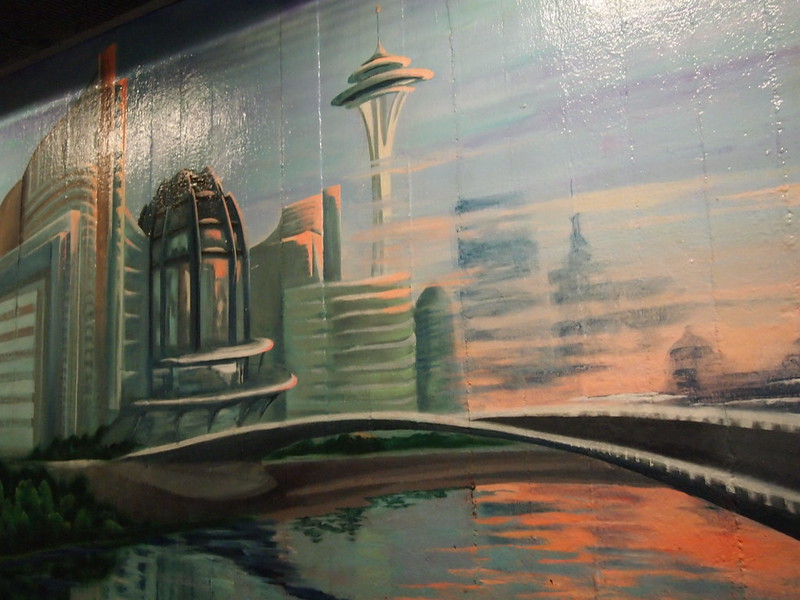
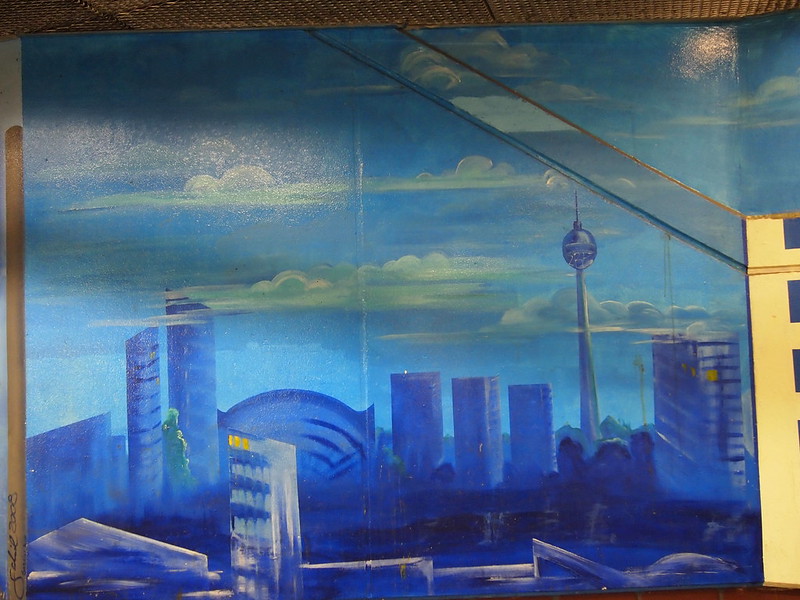
Tucked away in one part of the NKZ is this beautiful covered corridor which has been painted with murals of a futuristic Berlin city. This area in which the murals are located seems less than perfectly maintained and is a well-trafficked public thoroughfare which is littered with rubbish and strongly reeks of urine in one corner. I adore the strange juxtaposition of these odd future visions, placed right smack in a rather grim urban setting.
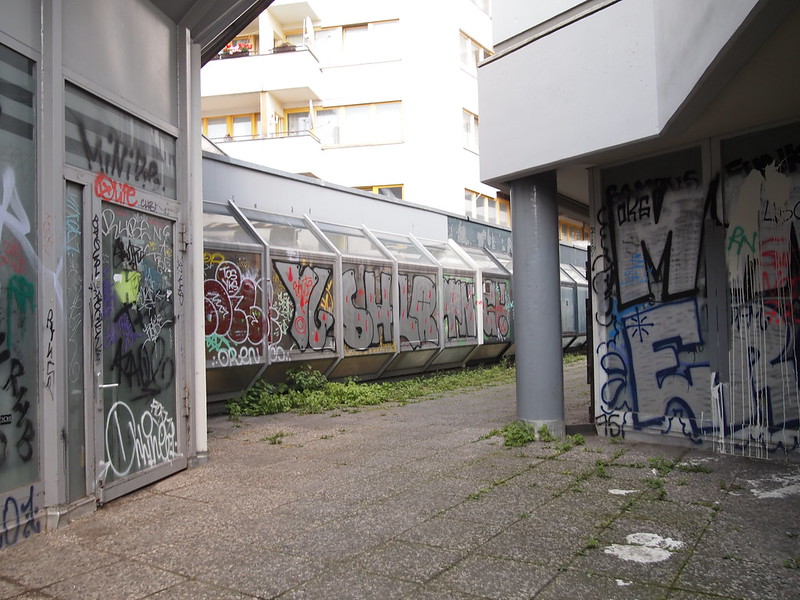
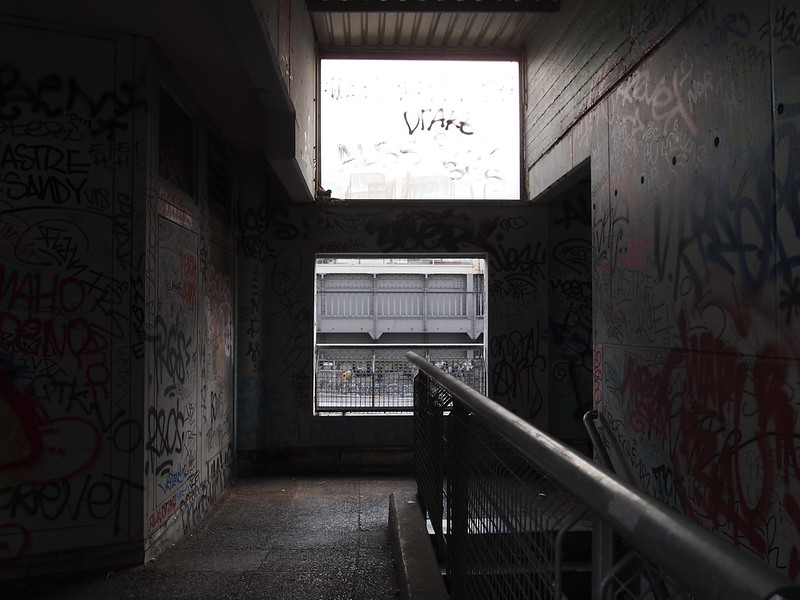
Whilst its not to say that I like any old sort of place which is rundown and poorly maintained, I realised that I do like places for the very same reasons which turn it into such an anti-social space: littered throughout the complex are these tiny pockets of empty space - sometimes disused and uncared for, covered in broken glass and graffiti, but on other occasions you may find a hidden dead-end public corner filled with plants and small comforts, places where one can find privacy for a moment within a very public space. They are spaces to be experienced, but which have no real purpose except perhaps to be a walkway between places; a temporary halfway house. And in a huge building like the NKZ there are so many of them.
One may debate that it is these hidden spaces within the building which engender antisocial behaviours because no one can see or police the activities that go on within it, yet perhaps naively I think they are also alternative spaces for dreaming. Strange isolated spaces from which the outside city is not visible for a moment, just as the city cannot see inside it. It is really just... an empty space, and I am attracted to that.
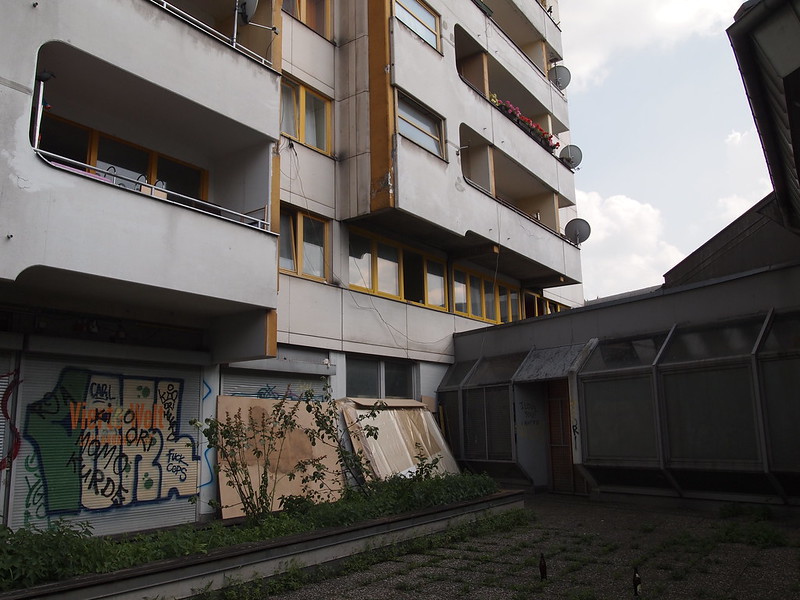
Super building with everything you ever need in one place!
ReplyDeleteI remember frequenting an apartment on the east side of the building, probably on the 4th-6th floor, that doubled as a concert venue. It was a nightmare to search up on google or anywhere else as it the venue was called "West Berlin"!! All windows and doors were sealed shut to keep the noise in, so there was always sweat dripping from the walls and ceilings,